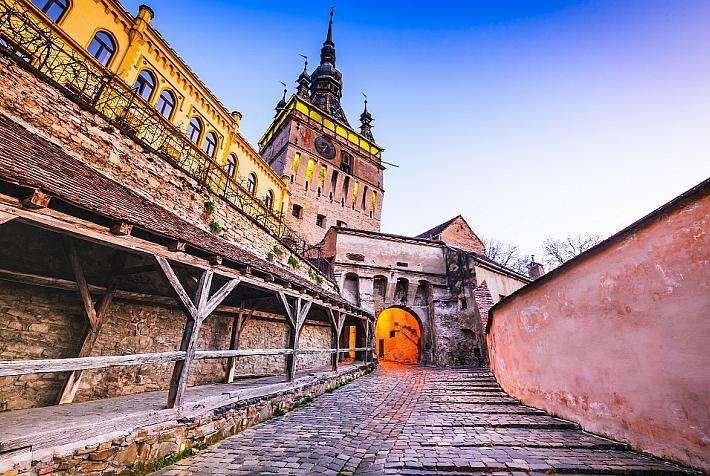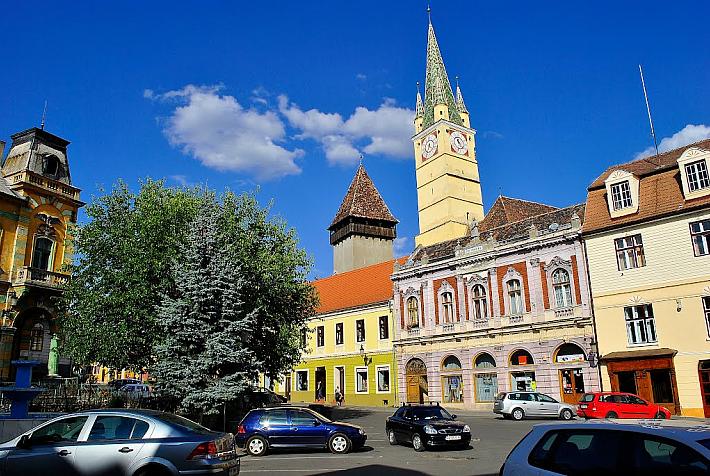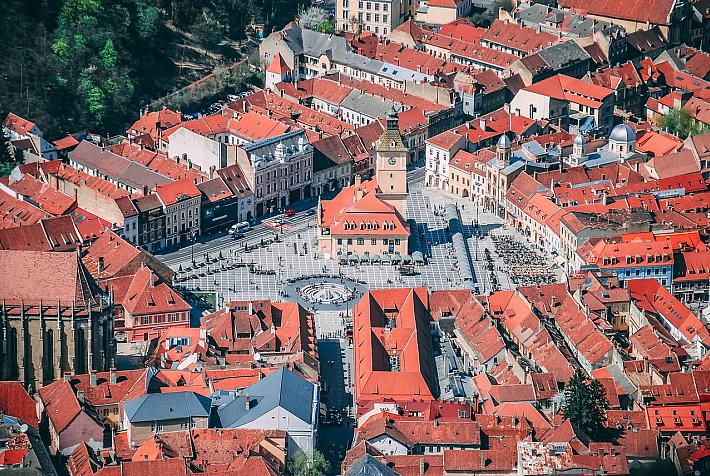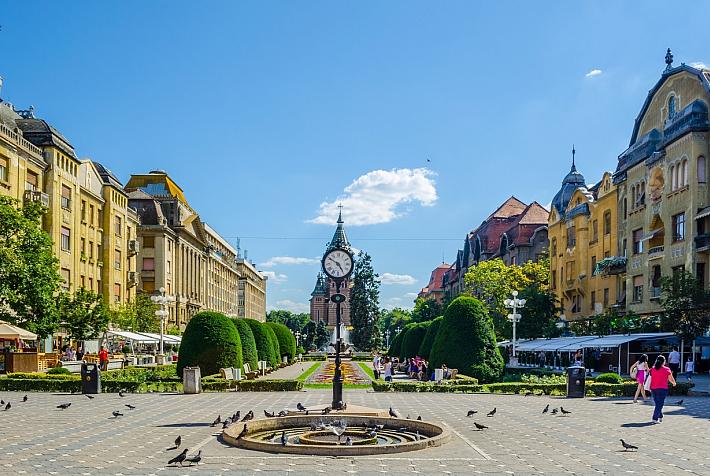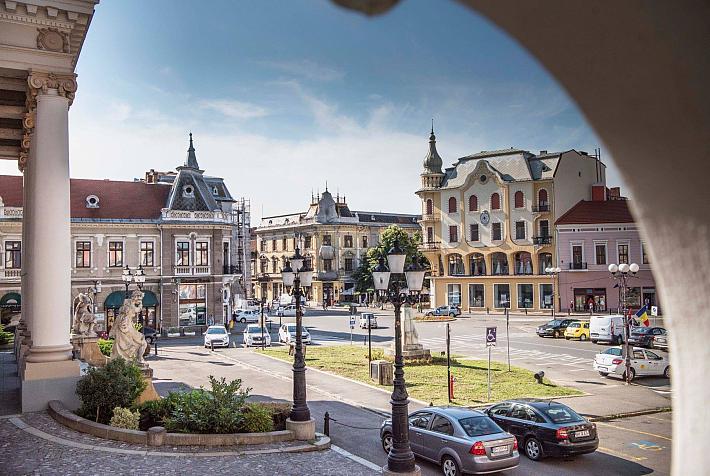Charming old towns to visit in Romania this year
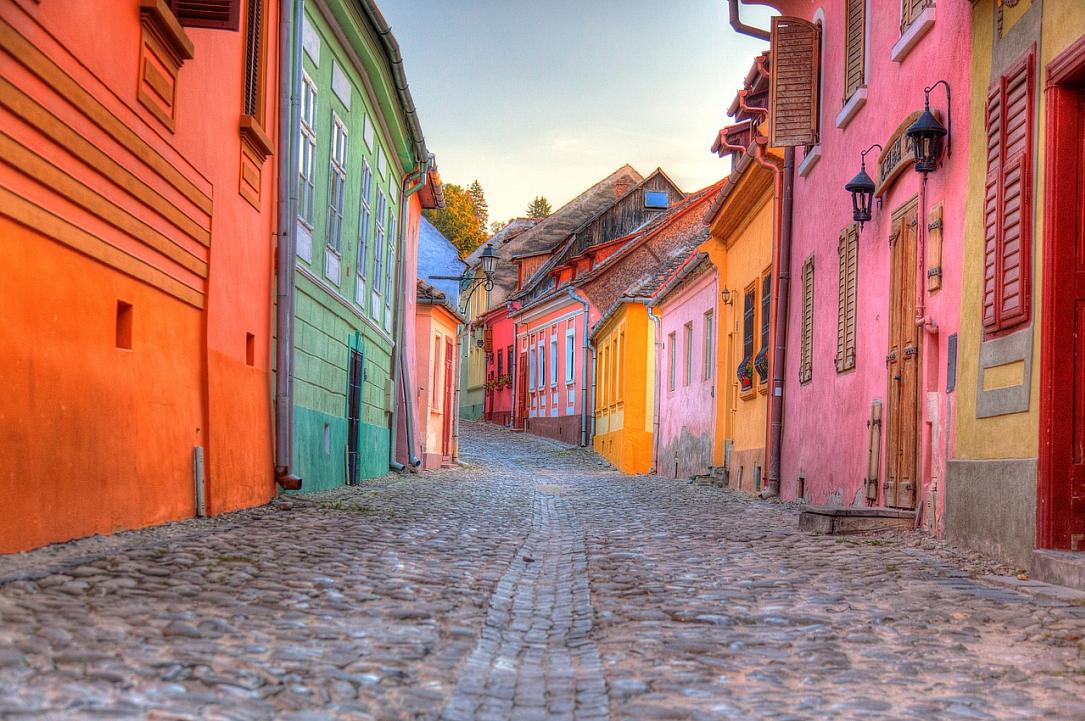
Many cities in the western part of the country have well preserved Old Towns, inviting visitors to take a stroll on winding cobbled streets and admire centuries-old buildings and structures, and attempt to imagine a time that no longer is. We put together below several suggestions of cities with well-preserved historical centers to consider for this year’s travel list.
The historic center of Sighișoara is one of the best preserved in the country and has been included on the UNESCO World Heritage list as a “fine example of a small, fortified medieval town which played an important strategic and commercial role on the fringes of central Europe for several centuries.”
Several defense towers of the old fortification are still standing, among them the 64-meter tall Clock Tower, which can be seen from around the city. At the beginning of the 17th century, it was equipped with a clock, featuring statues of the gods personifying the days of the week: Diana, Mars, Mercury, Jupiter, Venus, Saturn and the Sun. Elsewhere, the Tinsmiths' Tower, the Tailors' Tower, the Furriers' Tower, the Ropemakers' Tower, or the Tanners' Tower add to the sights tourists can visit in the city, alongside the Covered Stairway, linking the upper city to the school upon the hill, today the Josef Haltrich High School.
This small Transylvania town also has some fine examples of religious architecture and residential landmarks such as the Venetian House, the Deer House, the House of Chronicler Georgius Krauss, or the House of Vlad Dracul, where Vlad the Impaler is supposed to have been born.
A former European Capital of Culture in 2007, and Romania’s first city to hold the title, Sibiu has a beautifully-preserved old town, reminiscent of its Saxon past. A stroll through its winding cobbled streets will reveal both Gothic monuments and Art Nouveau facades, alongside medieval architecture.
One of the city’s most famous landmarks is the Council Tower, located close to the building that used to host the Sibiu City Hall. Visitors can climb up inside for views of the surrounding Small Square (Piața Mică). Part of the city’s old fortification network is still standing, with the Passage of the Stairs, the Soldisch Bastion, the Haller Bastion and the exterior defense wall. Besides their military purpose, they also served as headquarters and storehouses for the guilds in the old Hermannstadt, an established craft center beginning with the 14th century.
Also not to miss in the city is the Evangelic Church, erected in the 14th century on the premises of a Romanesque church dating from the 12th century. Its seven-level tower dominates the area, at its 73.34 meter height, bringing the spotlight to one of the most impressive Gothic constructions in the country. Although newer compared to other constructions in the city, the 19th century Bridge of Lies (pictured above) is one of Sibiu’s most beloved symbols. It connects the lower and upper town and is a favorite spot of couples. Its name is a reference to the legend surrounding it, namely that the bridge will collapse if someone will walk on it and tell a lie.
Also located in the old part of the town are most of the branches of the Brukenthal Museum: the Brukenthal Palace, hosting the art museum; the history museum housed in the house of Mayor Thomas Altemberger; the museum of pharmacy, located in a building dating back to the 16th century; and the natural history museum.
Often overlooked, Mediaș has an old town still proudly speaking of its Saxon heritage. For instance, the fortified St. Margaret's Church, built in the 15th century and featuring a Gothic winged altarpiece, dated between 1480 and 1520 and adorned with eight painted panels depicting the passion of Christ. Another landmark is the Franciscan Monastery, also built in the 15th century and, in time, also used as a hospital.
The town’s medieval defense bastions can still be seen today. Their names speak of the manufacturing and trade activity in town, as is the case with the Tailors’ Tower, the Wheelers' Tower or the Blacksmiths' Tower, among others. The inclined Trumpeters’ Tower, the tower of the St. Margaret church, was an observation point from where the town’s trumpeter announced the dangers that threatened the residents.
Among other sites to see, there is the Piarist School, where a school led by the Piarist Order functioned until 1790, the 18th century house of Lutheran pastor and historian Stephan Ludwig Roth, and the 16th century house of the Schuller family, now used as a cultural venue.
Brașov, the city standing at the foothills of Tâmpa Mountain, welcomes visitors with its Council Square (Piața Sfatului), the starting point to exploring what is left of the old settlement. Markets were organized here beginning with the 14th century, a right the city obtained officially in the 16th century. It is lined with 18th and 19th century houses hosting many cafes and restaurants and is the place where most visitors stop to take in the beautiful views of the mountain and have a drink.
The Council House (Casa Sfatului) sits in the middle of the square. It was built in 1420 and now houses the Brașov County Museum of History. The square is also home to one of the city’s best-known landmarks: the Black Church, a reference Gothic style monument in the country and the largest Lutheran place of worship in the country. At 89 meters in length and 38 meters wide, it measures 65 meters from the floor level to the highest point of its only bell tower. It features a six-ton bell and an impressive 4,000 pipe organ built in 1839 by Carl August Buchholz (1796–1884) which is played at the concerts held in the church. Also in the square is the Museum of Urban Civilization, a must-see to get to know more about the city’s past life.
Going outside of the area of the Council Square, visitors will find several of the town’s old fortifications, among them the Weavers’ Bastion, the Graft Bastion, the White Tower, and the Black Tower. In the network of streets surrounding the Council Square, Strada Sforii stands out as being the narrowest in the city.
Bistrița is the northernmost of the former Saxon burgs of Transylvania and has a refurbished old town that is worth a visit. The Evangelical Church is a landmark of the city, representative for the transition from the Gothic style to that of the Renaissance in Transylvania. At 75 meters, it is considered the highest medieval one in Romania, 1 meter taller than the tower of the Evangelical Cathedral in Sibiu.
Another landmark site is the Sugălete ensemble of 13 buildings from the 15th to the 16th century, typical of the Renaissance constructions in Transylvania. It lines up one side of the country’s old square and the colorful buildings are connected through their spacious entrances, forming a gallery of 20 arches. The houses were inhabited by the town’s nobility.
Timişoara’s Habsburg past is still visible in the city, with its Cetate neighborhood offering visitors a wealth of sites speaking of its history. Here, the Unirii Square and Libertăţii Square preserve many Baroque buildings dating from 18th century.
The Libertăţii Square is where the military administration of Timişoarei and of Banat region was located, at a time when the square used to be called Paradeplatz (Parade Square). Also here is the building of the old City Hall, which had its façade redone several times until it received its current look in 1853. The building’s Council Hall used to turn into a ballroom hall to accommodate the fastous parties of the time. The monument of St. Maty and St. Nepomuk is a Baroque creation brought from Viena in 1756. The sculpture was designed by Rapahel Donner, one of the most prolific Austrian sculptors of the 18th century, and created with help from sculptors Wasserburger and Blimm.
The city’s Unirii Square is another place to see several masterpieces of Baroque architecture. Among them is the Monument of the Holy Trinity (dating to 1740) and known as “”the statue of the plague” in connection to the plague that swept through the city in 1738 – 1739. Casa cu Lei (The House with Lions) and the nearby Nikolaus Lenau High School are other notable ediffices.
Another impressive site is the Roman-Catholic Episcopacy Palace. The inside is filled with several Baroque pieces, among which the painting of the main altar, signed by Michael Angelo Unterberger. Nearby, the Baroque Palace is another impressive building, which used to serve as the residence of the Landespresident (the governor of Banat). Today it houses the city’s Art Museum and to many is the most luxurious building in town.
A visit to Oradea’s older part is a trip back to a time when Art Nouveau was taking over the worlds of architecture and arts. Two of the city’s main squares, Union Square and Ferdinand Square, and the surrounding area host some of the most beautiful buildings in the city.
For instance, the Black Eagle Palace is a Secession style architectural accomplishment in the city. It was designed to house a theater, ballrooms, a casino, offices and more. Today, it is one of the city’s top get-together places and hosts many cafes and restaurants.
The Union Square area gathers the Town Hall and the Greek Catholic Bishop Palace, built in 1903 after the plans of architect Rimanoczy Kalman Jr. in renaissance style with Baroque and Rococo elements. The eclectic Ferdinand Square is where the Regina Maria National Theater was built in 1900. The Levay Palace and the Poynar Palace are also to be found in the perimeter of the square.
(Opening photo: Pixabay)
editor@romania-insider.com







